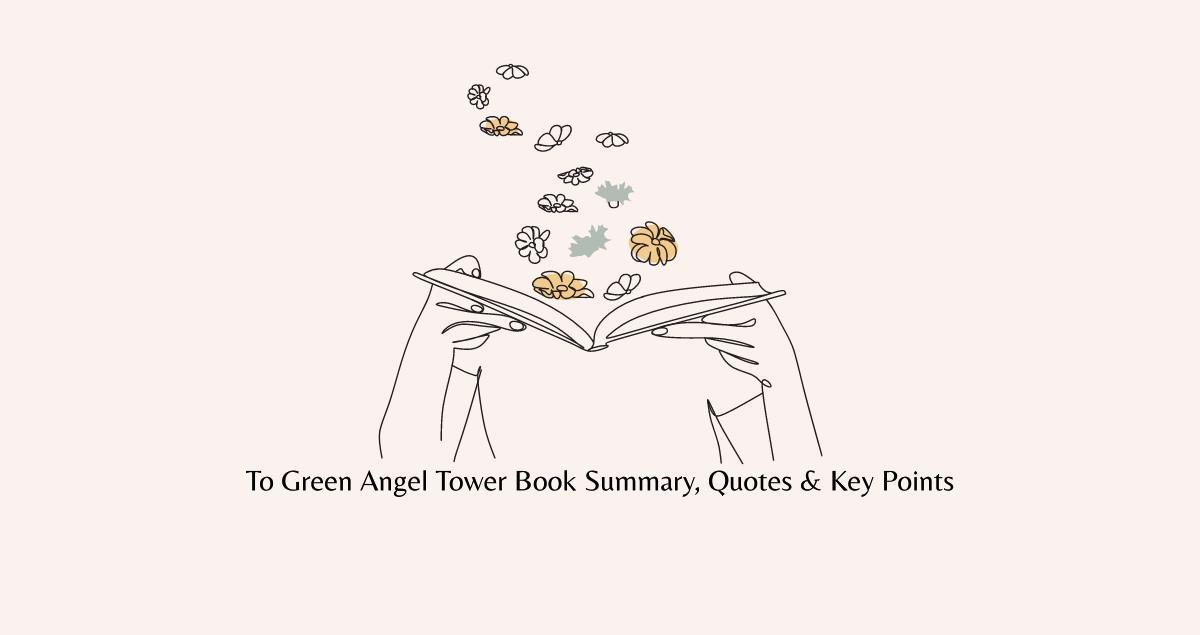The final book in Tad Williams' Memory, Sorrow, and Thorn trilogy, To Green Angel Tower, brings the epic story to a satisfying conclusion. Williams' writing style and intricate world-building have captivated readers since the first book was published in 1988.
Table of Content
To Green Angel Tower Book Summary
Overview
Tad Williams' To Green Angel Tower is the final book in the Memory, Sorrow, and Thorn trilogy. The book was published in 1993 and has since become a beloved classic in the fantasy genre.
Plot Summary
The book picks up where the previous one left off, with the main characters facing the threat of the Norns, a race of powerful, immortal beings who seek to destroy humanity. The story follows Simon, Miriamele, and their companions as they struggle to unite the kingdoms of Osten Ard and defeat the Norns.
Characters
The main characters in the book include Simon, a kitchen boy turned hero; Miriamele, a princess fighting for her kingdom; Binabik, a troll who becomes Simon's mentor; and Josua, Miriamele's brother and rightful heir to the throne. Other notable characters include Tiamak, a scholar; Isgrimnur, a knight; and the Sithi, a race of elf-like beings.
Themes
One of the major themes explored in To Green Angel Tower is the power of storytelling. Throughout the book, characters tell stories to each other, and these stories have a significant impact on the plot. The book also delves into complex moral and ethical questions, exploring the nature of good and evil and the consequences of one's actions.
Symbolism
The book is rich with symbolic elements, including the sword Thorn, which represents both power and responsibility, and the Heart of What Was Lost, which symbolizes the cost of war. The Norns themselves are also symbolic, representing the destructive power of greed and the desire for immortality.
Style
Williams' writing style is descriptive and immersive, drawing readers into the world of Osten Ard. He uses multiple narrators to give readers a broader perspective on the story, and his use of foreshadowing creates a sense of tension and anticipation throughout the book.
Setting
The world of Osten Ard is richly detailed and plays a significant role in the story. The book explores different regions of the world, including the frozen wasteland of Nakkiga and the lush forests of Aldheorte. The setting also reflects the themes of the book, with the Norns representing the destructive power of greed and the desire for immortality.
Reception
To Green Angel Tower has received critical acclaim and is widely regarded as a classic in the fantasy genre. It has been praised for its intricate world-building, complex characters, and engaging plot.
To Green Angel Tower Book Review
To Green Angel Tower is a satisfying conclusion to the Memory, Sorrow, and Thorn trilogy. Williams' writing style and intricate world-building are on full display, and the book's themes and symbolism add depth and complexity to the story. Fans of epic fantasy will not be disappointed.
To Green Angel Tower Quotes
"The world is full of stories, and from time to time, they permit themselves to be told."
"The heart of wisdom is tolerance."
To Green Angel Tower Key Points
Importance of storytelling
The book emphasizes the power and significance of storytelling, with characters telling stories to each other throughout the book.
Exploration of morality and ethics
The book delves into complex moral and ethical questions, exploring the nature of good and evil and the consequences of one's actions.
FAQs for To Green Angel Tower
What is the significance of the title?
The title refers to a tower that plays a significant role in the story. It is also symbolic, representing the hope for a better future.
Who are the main antagonists in the story?
The Norns, a race of powerful, immortal beings, are the main antagonists in the story.
What role do magic and supernatural elements play in the story?
Magic and supernatural elements play a significant role in the story, with characters using magic to fight the Norns and other enemies.
How does the book explore themes of power and authority?
The book explores the corrupting influence of power and authority, with characters struggling to use their power for good and avoid becoming like the Norns.
What is the role of religion in the story?
Religion plays a minor role in the story, with characters occasionally referencing the gods of Osten Ard.
What is the significance of the book's ending?
The book's ending brings the story to a satisfying conclusion, with the main characters achieving their goals and the world of Osten Ard being saved from destruction.
What is the significance of the book's epigraph?
The book's epigraph, "The heart of what was lost beats eternal," is a reference to the cost of war and the sacrifices made by the characters throughout the story.
What is the role of prophecy in the story?
Prophecy plays a minor role in the story, with characters occasionally referencing prophecies that have been made about the fate of Osten Ard.
What is the significance of the book's use of multiple narrators?
The use of multiple narrators allows readers to see the story from different perspectives and adds depth and complexity to the plot.
How does the book explore the concept of destiny?
The book explores the idea of destiny, with characters struggling to fulfill their roles in the larger story and questioning whether their actions are predetermined or the result of their own choices.

